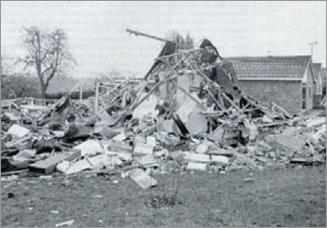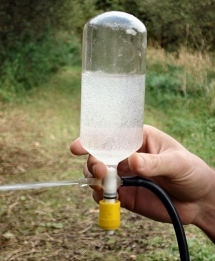Methane in UK groundwater research overview

Methane (CH4) is an important greenhouse gas and a common trace component of groundwater.
We are currently undertaking a National Baseline Methane Survey in groundwaters across the UK. This work will enable future changes to be measured, which is of relevance to current issues such as possible shale gas extraction.
The BGS has been studying methane in UK groundwaters since the 1980s to investigate:
- The potential for methane emissions from groundwaters of the UK (Gooddy and Darling, 2005)
- Sources of methane and their hydrogeochemical controls (Darling and Gooddy, 2006)
- Baseline concentrations in UK groundwaters
- When methane concentrations reach unsafe levels and become explosive
Groundwater methane contribution to total atmospheric emissions
Using baseline methane concentrations for the main groundwater supply aquifers in the UK, Gooddy and Darling (2005) estimated that water supply groundwater sources contribute only 0.05 per cent to total UK methane emissions (up to 3.3 x 10-4 Tg/year).
In terms of a global budget, the groundwater methane input was estimated to be two orders of magnitude smaller.
Error processing SSI fileBaseline concentrations in UK groundwaters

Understanding the 'baseline' concentrations of methane in UK groundwaters can help us to assess future methane survey or incident data.
Measurements of potable waters from the Cretaceous, Jurassic and Triassic carbonate and sandstone aquifers reveal methane concentrations of up to 500 µg l-1 but a mean value of < 10 µg l-1.
Aquiclude and thermal waters from the Carboniferous and Triassic have concentrations in excess of 1500 µg l-1 (Darling and Gooddy, 2006).
BGS scientists are building on our previous work and surveying methane concentrations (and other chemical parameters) in groundwater in a range of UK aquifers for the National Baseline Methane Survey of UK groundwaters.
When does methane become explosive and create a potential safety hazard?
Methane becomes an explosive hazard at concentrations of 5–15% by volume in air.
Assuming complete outgassing from water, this requires a minimum dissolved methane concentration of 1600 µg l-1.
This figure is considerably above the general methane baseline (see above), but concentrations of up to ten times higher have been found in tunnels drilled in organic-rich shales.
Contact
Contact Dr George Darling for further information






